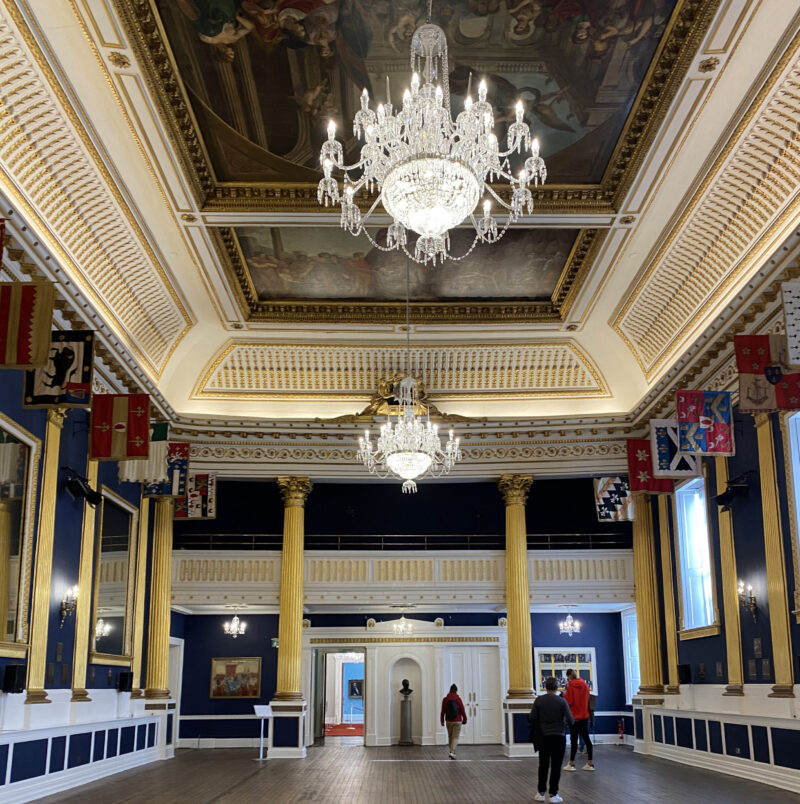
Dublin has a wide array of architectural styles on display, and often, in the rush to attend lectures or go to the latest society event, it is easy to just ignore the high walls and fantastic ceilings that tower above us. However, we believe it is certainly worthwhile to explore the many buildings that make up this unique city. So we, the Radius Art team, have brought you our top five buildings to visit and view in Dublin. Grab an umbrella and a camera phone and away you go – now you have no excuses.
Trinity’s Long Room Hub
Located directly on campus, the Long Room Hub opened in 2010 and is at the northern end of Fellows Square. The four-storey tall building was built under the architecture firm McCullough Mulvin. It has a granite surface and deeply inset windows on its exterior, whereas the interior walls are lined with walnut. It was initially designed to facilitate the process of digitalisation of the library’s collection, it now also houses staff, PhD students, and postdoctoral researchers and offers innovative seminars and conferences covering research across Trinity’s different Arts and Humanities Schools.
1 Windmill Lane (WML)
If you are curious to venture out into the docklands area, why not make a quick stop in Windmill Quarter? The modern atmosphere of one of six buildings, called 1 WML, was designed by MOLA Architecture for Hibernia Reit. The building is a mixed-use development: residential, office and retail space on 16,000 square metres. However, do not be fooled by modern architecture. The area has a long history, starting with a five-storey windmill that was located there until the 1960s, giving Windmill Lane its name.
General Post Office (GPO)
The GPO will forever have a central role in Irish history and is only a short walk from Trinity’s front gates. It is an excellent place to visit if you would like to see some neoclassical architecture that has become emblematic of Dublin. Construction began in 1814, designed by Francis Johnston, this building was going to be iconic from the very beginning. During the 1916 rising, the building sustained substantial damage and was reconstructed under the purview of Thomas Joseph Byrne in 1924. Completed in 1932, the external facade still remains true to the original construction, including the Ionic pillars, however, the interior reflects the more contemporary styles employed in the 1920s.
National Gallery of Ireland
The National Gallery of Ireland is one of the most interesting buildings architecturally because of the multiplicity of styles employed. The Dargan Wing was completed in 1864 and includes many of the neoclassical features that have been used around other significant public buildings in Dublin. The Milltown Wing was completed nearly forty years later and includes a more unorthodox approach for Dublin designs of that period. More contemporary architecture can be found on the interior with the Courtyard, Beit Wing, the Millenium Wing and Print Gallery, all constructed in the past few decades.
Dublin Castle
Finally, Dublin Castle is another excellent place to visit because of the extensive courtyards around it, the gardens in front of the Chester Beatty Library, not to mention the building’s illustrious past. Dublin Castle was originally a medieval fortress and was rebuilt in the Georgian style after a fire in 1684. The centre of English rule in Ireland until 1922, it is now open to the public and used by the Irish government to host significant events.






